Search the Special Collections and Archives Portal
Search Results
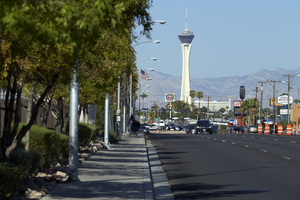
Stratosphere Tower as seen from East Sahara Avenue near Sandhill Raod looking west, Las Vegas, Nevada: digital photograph
Date
2017-09-14
Archival Collection
Description
The Stratosphere Tower can be seen from East Sahara Avenue near Sandhill Road.
Image
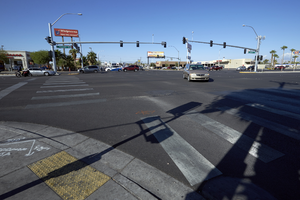
Traffic at the intersection of Boulder Highway / Fremont Street near East Sahara Avenue looking west, Las Vegas, Nevada: digital photograph
Date
2017-09-14
Archival Collection
Description
Traffic navigates the intersection of Boulder Highway / Fremont Street and East Sahara Avenue.
Image
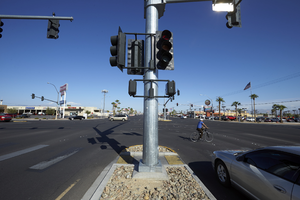
Traffic at the intersection of Boulder Highway / Fremont Street near East Sahara Avenue looking northwest, Las Vegas, Nevada: digital photograph
Date
2017-09-14
Archival Collection
Description
Traffic and a bicyclist navigate the intersection of Boulder Highway / Fremont Street and East Sahara Avenue. The intersection is wide enough to require a pedestrian stopping point in the median.
Image
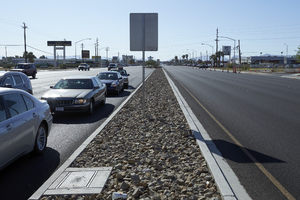
Median at Boulder Highway and East Sahara Avenue looking southeast, Las Vegas, Nevada: digital photograph
Date
2017-09-14
Archival Collection
Description
Looking southeast down Boulder Highway at its intersection with East Sahara Avenue.
Image
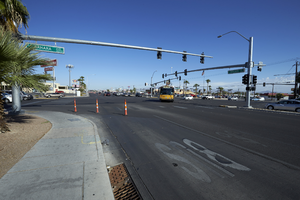
Traffic at the intersection of Boulder Highway / Fremont Street near East Sahara Avenue looking northwest, Las Vegas, Nevada: digital photograph
Date
2017-09-14
Archival Collection
Description
Traffic navigates the intersection of Boulder Highway / Fremont Street and East Sahara Avenue.
Image
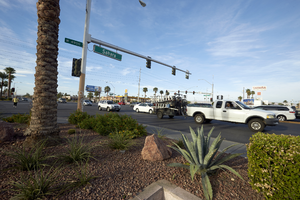
Desert landscaping at West Sahara Avenue and Decatur Boulevard looking southwest, Las Vegas, Nevada: digital photograph
Date
2017-09-19
Archival Collection
Description
Traffic flows past the desert landscaping on the northwest corner of West Sahara and Decatur Boulevard.
Image
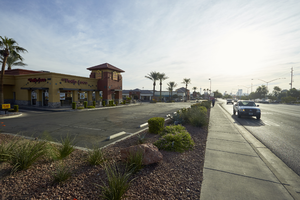
El Pollo Loco on West Sahara Avenue and Decatur Boulevard looking east, Las Vegas, Nevada: digital photograph
Date
2017-09-19
Archival Collection
Description
Traffic flows in front of a fast food restaurant on the northeast corner of West Sahara Avenue and Decatur Boulevard.
Image
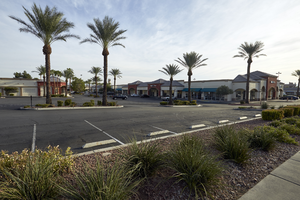
Sahara Pavilion North, looking north from West Sahara Avenue east of Decatur Boulevard, Las Vegas, Nevada: digital photograph
Date
2017-09-19
Archival Collection
Description
The Sahara Pavilion North.
Image

Sign at the Sahara Pavilion North, looking north from West Sahara Avenue east of Decatur Boulevard, Las Vegas, Nevada: digital photograph
Date
2017-09-19
Archival Collection
Description
A sign advertising the Sahara Pavilion North.
Image
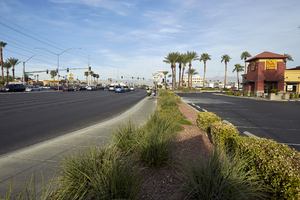
Landscaping along West Sahara Avenue east of Decatur Boulevard, looking west, Las Vegas, Nevada: digital photograph
Date
2017-09-19
Archival Collection
Description
Landscaping belonging to the Sahara Pavilion North commercial development is seen along West Sahara Avenue east of Decatur Boulevard.
Image
Pagination
Refine my results
Content Type
Creator or Contributor
Subject
Archival Collection
Digital Project
Resource Type
Year
Material Type
Place
Language
Records Classification
